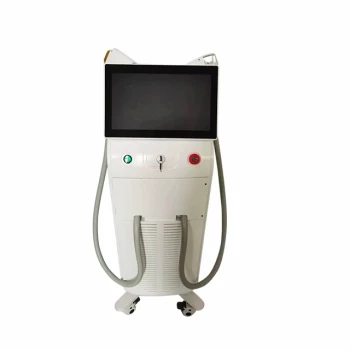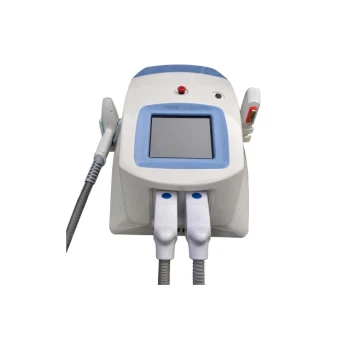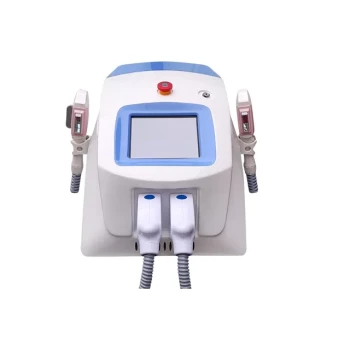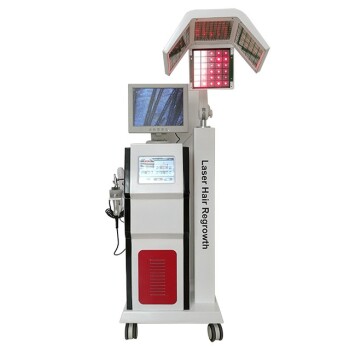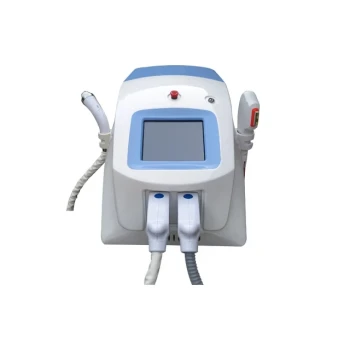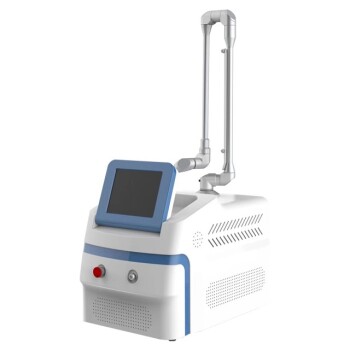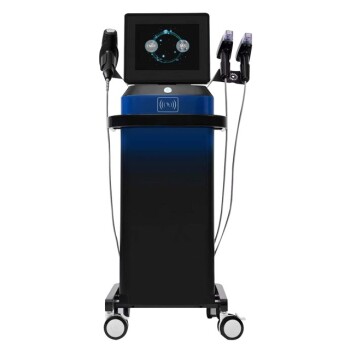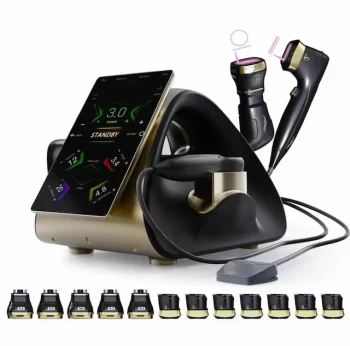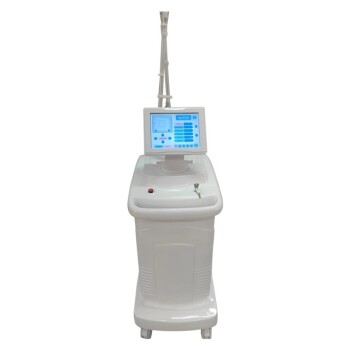In short, yes. A diode laser can achieve permanent hair removal, but it's crucial to understand what "permanent" means in this context. True permanency requires a series of treatments because the laser is only effective on hairs in their active growth phase, and not all of your hair is in this phase at the same time. The result is a permanent reduction in the number of hairs.
The core principle is simple: Diode lasers permanently destroy hair follicles, but only those in an active growth stage. This is why a full course of multiple, correctly timed sessions is necessary to achieve a lasting and significant reduction in hair.

How Diode Lasers Achieve Hair Reduction
To understand the results, you must first understand the mechanism. Diode laser treatment is a precise medical process, not a simple cosmetic procedure.
The Principle of Selective Photothermolysis
Diode lasers work by emitting a single, concentrated wavelength of light that is absorbed by the melanin (pigment) in the hair shaft.
This light energy converts to heat, which travels down the hair to the follicle. The heat then damages or destroys the key parts of the follicle responsible for hair growth, preventing or delaying future hair production.
The Crucial Role of the Anagen (Growth) Phase
Hair grows in cycles, and the laser is only effective during the anagen phase, when the hair is actively growing and firmly connected to its follicle.
At any given time, only a fraction of your body's hair is in this phase. The rest is in a transitional or resting state, where the laser cannot effectively reach and destroy the follicle. This is the fundamental reason multiple sessions are required.
What "Permanent" Really Means
The FDA defines permanent hair reduction as a stable, long-term reduction in the number of hairs regrowing after a treatment regimen.
It does not mean 100% of hair will be gone forever. The goal is to destroy the vast majority of treated follicles, leading to a dramatic and lasting decrease in hair density and thickness.
Understanding the Trade-offs and Limitations
Setting realistic expectations is the key to being satisfied with your results. It's essential to recognize the technology's trade-offs.
It's Reduction, Not Total Elimination
The most common outcome is an 80-90% reduction in hair after a completed course of treatments. Some fine, light, or sparse hairs may remain.
Hormonal changes throughout life (such as pregnancy or menopause) can also sometimes trigger new hair growth from previously dormant follicles. This is new growth, not regrowth from treated follicles.
The Best Candidates See the Best Results
The ideal candidate has dark, coarse hair and light skin. This high contrast allows the laser to target the melanin in the hair with maximum efficiency while minimizing energy absorption by the surrounding skin.
Treatments can be less effective on very light, red, or gray hair, which lacks sufficient melanin to absorb the laser's energy.
It Requires a Time and Financial Commitment
Permanent hair reduction is not a one-time event. A typical treatment plan involves 6-8 sessions spaced 4-8 weeks apart, depending on the treatment area.
You must be prepared to follow the full schedule recommended by your technician to target hair follicles as they enter the anagen phase.
Making the Right Choice for Your Goal
To decide if diode laser is right for you, align the technology's capabilities with your personal goals.
- If your primary focus is a dramatic and lasting decrease in hair: Diode laser is one of the most effective and proven methods available for achieving permanent hair reduction.
- If your primary focus is removing every single hair forever: Adjust your expectations to a significant reduction, as 100% elimination is not a realistic outcome for any laser technology.
- If you are concerned about maintenance: Plan for the possibility of needing a touch-up session every year or two to address any new growth or stubborn hairs.
Ultimately, making an informed decision comes from understanding that diode laser offers a permanent solution for hair reduction, not a magic wand for total hair eradication.
Summary Table:
| Key Aspect | Details |
|---|---|
| Effectiveness | Achieves permanent hair reduction (80-90% reduction) |
| Mechanism | Targets melanin in hair follicles using selective photothermolysis |
| Treatment Plan | 6-8 sessions, spaced 4-8 weeks apart |
| Ideal Candidate | Dark, coarse hair and light skin for optimal results |
| Realistic Outcome | Significant reduction, not 100% elimination |
Ready to offer professional, lasting hair removal results to your clients? BELIS specializes in advanced diode laser equipment designed for medical aesthetics clinics and premium beauty salons. Our devices deliver precise, safe, and effective treatments, ensuring high client satisfaction and repeat business. Contact us today to learn how our solutions can elevate your services and grow your practice!
Visual Guide
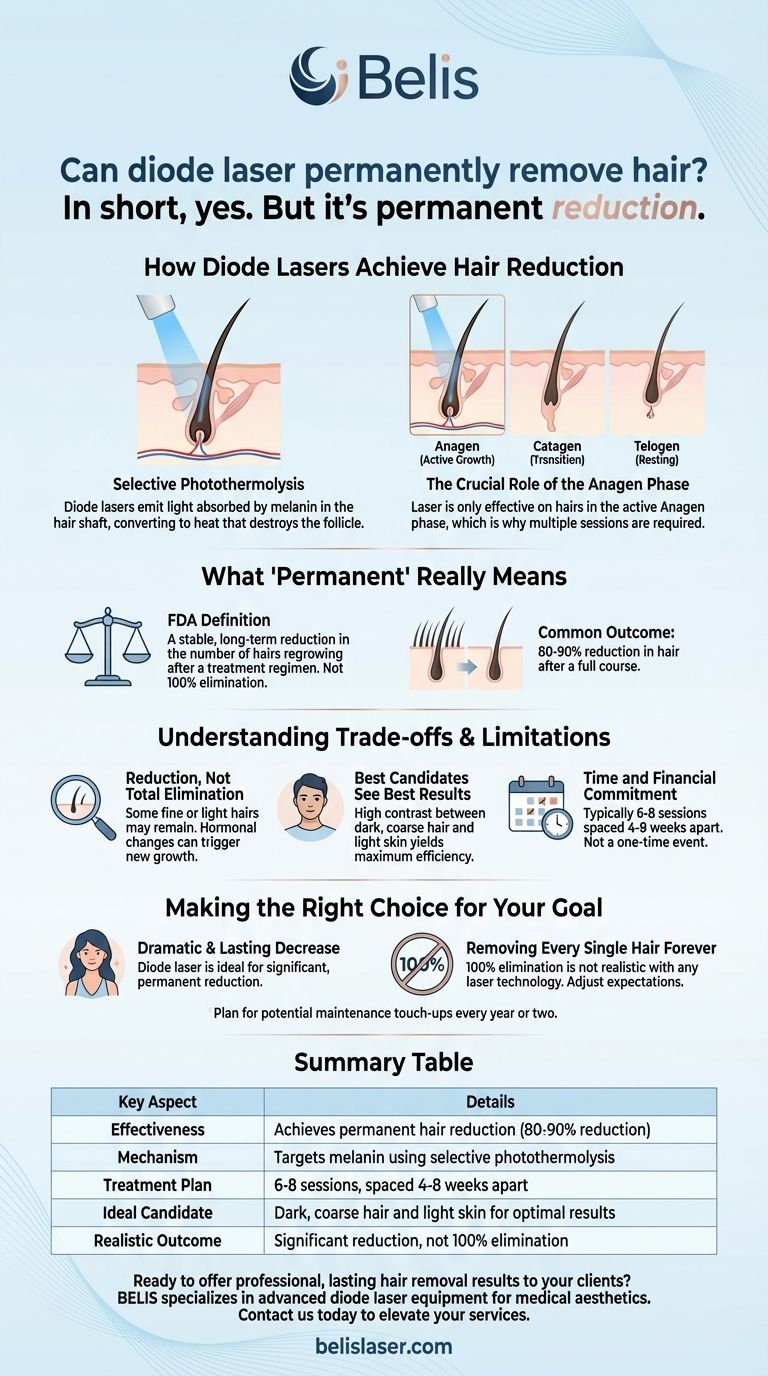
Related Products
- Trilaser Diode Hair Removal Machine for Beauty Clinic Use
- Diode Laser SHR Trilaser Hair Removal Machine for Clinic Use
- Diode Tri Laser Hair Removal Machine for Clinic Use
- Clinic Diode Laser Hair Removal Machine with SHR and Trilaser Technology
- Clinic Use IPL and SHR Hair Removal Machine with Nd Yag Laser Tattoo Removal
People Also Ask
- Is it safe to do laser every 2 weeks? The Critical Timing for Safe & Effective Results
- Can you use laser hair removal on intimate areas? Achieve Lasting Smoothness and Comfort
- What is the best gap between laser hair removal sessions? The 4-6 Week Rule for Optimal Results
- How to get the most out of laser? Maximize Your Hair Removal Results Safely
- Who is not a good candidate for laser hair removal? Ensure Your Safety and Results


